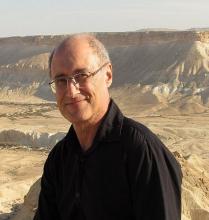
On March 5, the NASA Land-Cover / Land-Use Change (LCLUC) Program Manager, Garik Gutman, sent out a message to the extended LCLUC team of researchers. Below, are a few spots from his letter where Landsat was mentioned.
Excerpts:
Along with the continued observations from the LCLUC workhorse mission—the Landsat program—we have experienced a tremendous increase in the number of observations at landscape scale owing to our partner agency ESA’s Sentinel program. Our program, along with many colleagues over the world, is investing in developing multi-source methods in studying LCLUC. I appreciate contributions from each and every one of you in keeping the LCLUC a global outreach, vibrant program at NASA’s Earth Science.
==
A possible solution for bringing together our folks with Europeans is to have a joint session at some big meeting in the US and/or Europe. This will be implemented at the ESA Living Planet Symposium in Milano in May, where we are organizing a special MuSLI [Multi-Source Land Imaging] session (convener [and Landsat 9 Project Scientist] Jeff Masek). – please watch the website. The session has been formed already and I encourage all MuSLIans as well as Landsat Science Team members to attend this session. I’d like to express again my appreciation for the outstanding leadership in MuSLI activities by Project Scientist Jeff Masek (NASA GSFC) and thank his ESA counterpart Benjamin Koetz (ESA/ESRIN) too.
==
Medium resolution and high-resolution constellations.
Research on monitoring land with moderate resolution has intensified worldwide owing to the freely accessible ESA Sentinel Program satellite data. Those data together with Landsat time series and current observations provided a serious breakthrough in studying changes in land cover/use. Two main factors contributed to this quantitative leap: first, the frequency of mid-resolution (Sentintel-2 and Landsat) observations increased, and second, the global continuous radar data from Sentinel-1 are becoming more and more utilized by researchers worldwide. The collaboration of NASA LCUCers with the ESA-affiliated European scientists working on remote sensing applications with Sentinel data has been accelerating specifically by the MuSLI projects, with the new MuSLI round and the USGS selections for the Landsat Science Team, with some of lucky PI’s selected by both NASA and USGS. With two Sentinel-2 spacecraft (a and b) the frequency of observing the same target on Earth has increased even more. With Landsat 9 planned for launch in December of 2020 the mid-resolution virtual constellation for land monitoring will enhance our capabilities to observe each 20-30 m targets on the Earth’s land every 3 days (provided cloud-free skies).
The experience obtained during the past three years will play a critical role in implementing the virtual constellation concept. I still have hopes that eventually researchers will use satellite data other than those from Landsat and Sentinels.
==
+ Read Gutman’s March 2019 LCLUC message in its entirety






